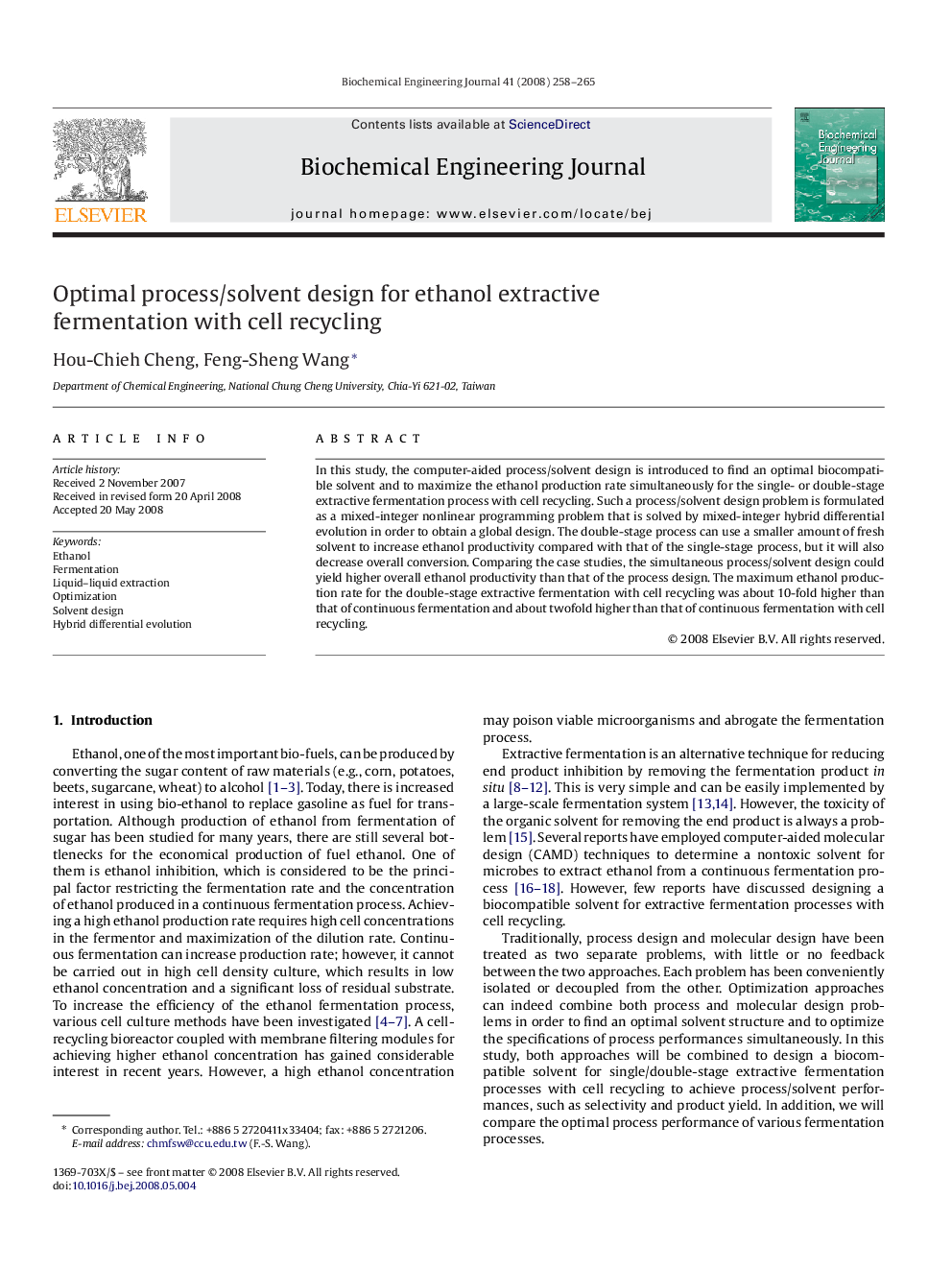| Article ID | Journal | Published Year | Pages | File Type |
|---|---|---|---|---|
| 4246 | Biochemical Engineering Journal | 2008 | 8 Pages |
In this study, the computer-aided process/solvent design is introduced to find an optimal biocompatible solvent and to maximize the ethanol production rate simultaneously for the single- or double-stage extractive fermentation process with cell recycling. Such a process/solvent design problem is formulated as a mixed-integer nonlinear programming problem that is solved by mixed-integer hybrid differential evolution in order to obtain a global design. The double-stage process can use a smaller amount of fresh solvent to increase ethanol productivity compared with that of the single-stage process, but it will also decrease overall conversion. Comparing the case studies, the simultaneous process/solvent design could yield higher overall ethanol productivity than that of the process design. The maximum ethanol production rate for the double-stage extractive fermentation with cell recycling was about 10-fold higher than that of continuous fermentation and about twofold higher than that of continuous fermentation with cell recycling.
